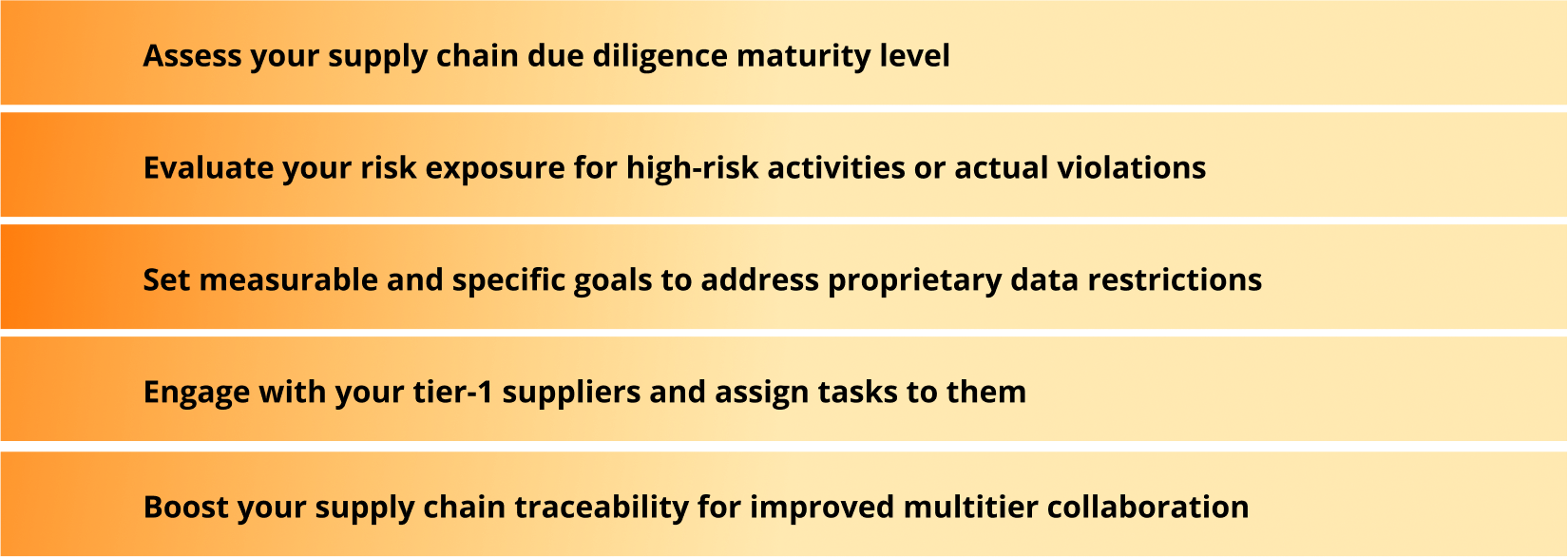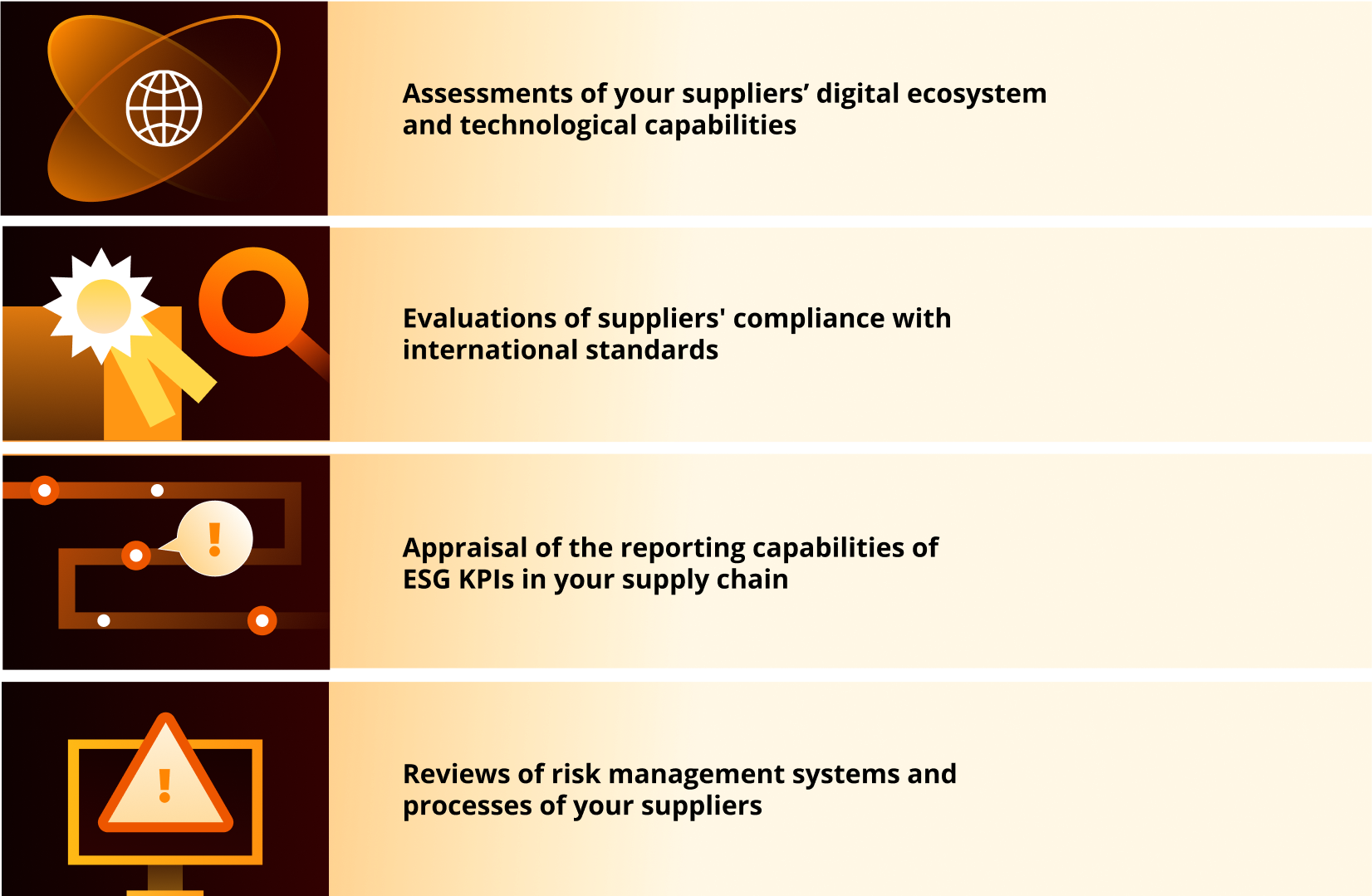
Boosting Supply Chain Resilience With ESG Transparency
After years of minimal oversight, regulatory pressure is mounting on companies to implement ESG initiatives in their supply chains. The obvious first step to undertaking ESG initiatives is figuring out where your problems are. So, it’s no surprise that 58% of supply chain leaders report seeing increased end-to-end visibility in their supply chain as one of their top two priorities.
However, just 37% managed to achieve that supply chain visibility. Without supply chain transparency, you could face legal expenses, fines, penalties, and harm to your reputation. But even more threatening is the prospect of your supply chain collapsing when you discover serious ESG infringements — without enough time to mitigate your vulnerability.
That’s why getting ahead on ESG due diligence is a crucial component of developing supply chain resilience. By building a long-term roadmap to greater data maturity, you develop the insight, agility, and supply chain resilience you need to master the new ESG landscape.
The new supply chain ESG landscape
Supply chain ESG regulations are expanding to include concerns about human rights violations, environmental damage, and other pressing ethical questions. The European Union's Corporate Sustainability Reporting Directive and Germany's Supply Chain Due Diligence Act have raised the bar on what is expected of firms — and the penalties for noncompliance. As opposed to previous versions, these laws have teeth: Germany’s new law imposes fines of up to 2% of companies’ global turnover if they cannot demonstrate ESG transparency in their supply chain.
While these initiatives are currently tied to specific markets, they will have a cascading effect. Moreover, they are a clear signal of even stricter regulations to come. Supply chain leaders who still rely on a reactive approach to ESG monitoring and transparency will be caught unprepared. Unless they preempt the coming wave of regulation. So, what’s stopping them?
The blockers to deep ESG transparency
The problem stems from an adherence to a status quo that ceased to be relevant with the emergence of a new supply chain disruption-as-a-rule. This methodology relies on the assumption that supply chains will largely run smoothly, with few exceptions.
In a practical sense, that boils down to using outdated technology such as Excel spreadsheets and local dashboards to keep track of suppliers. That lack of development has created a series of barriers to gaining deep, data-driven insight into supply chains:

Technical
- Siloed data sourcing systems
- Absence of end-to-end functionality for supply chain monitoring
- Reliance on manual communication with suppliers

Data-based
- Unreliable data from supply chain partners
- Lack of universal metrics and standards for data exchange
- Nonexistence of a single source of truth for data collection

Organizational
- Lack of trust around data transfer platforms
- Unclear best practices for governance and data transfers
- Shortage of skilled talent and lack of leadership engagement
In the new regulatory environment, supply chain resilience requires robust ESG monitoring and transparency. Without an end-to-end data reporting platform — complete with agreed-upon standards and governance — your supply chain could contain ESG violations without you even knowing. That leaves you exposed to reprisals and potentially crippling disruptions.
To truly get a grip on your supply chain’s ESG metrics, you must develop the data capabilities required for multitier transparency. That is because your supply chain’s ESG values don’t just come from your direct partners, but rather from multiple tiers of suppliers. That necessitates reaching the stage of data maturity with full external data integration. But how do you get there?
Your ESG data roadmap
The first step to harnessing ESG resilience is establishing a clear picture of your data capabilities. You need to evaluate your supply chain risk management process by assessing both the data maturity level of your supply chain, as well as its ESG capabilities.
In a further step, you can use it to access real-time monitoring of your suppliers’ data, as well as their technology capabilities, compliance with international agreements, reporting, governance, and supply chain management.
With that information, you can:

This functionality lays the foundation to begin deploying the technologies you need to build supply chain resilience to regulatory pressure through ESG transparency. Depending on the status of your data capabilities, that could include:

With that visibility, you can anticipate ESG problems in your supply chain before they disrupt your operations. This gives you the resilience you need to thrive in the current regulatory environment.
Developing resilience through ESG transparency
ESG transparency is a key part of developing supply chain resilience. The first step is determining where your weaknesses are and what you can do to overcome them.
If you’re ready to take the first step to supply chain resilience through data-driven ESG transparency, let’s talk.

